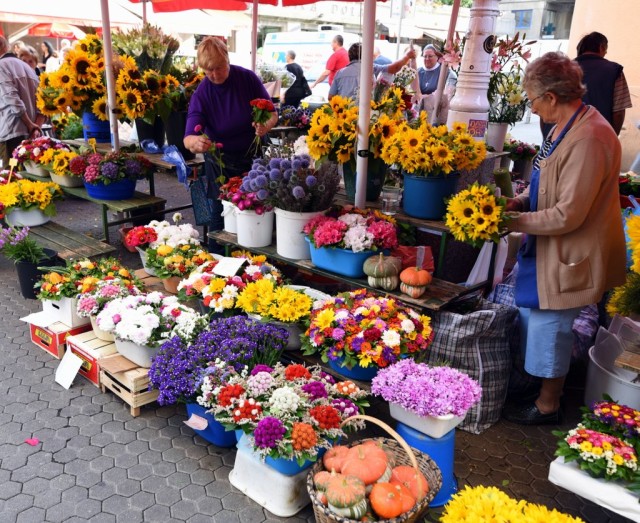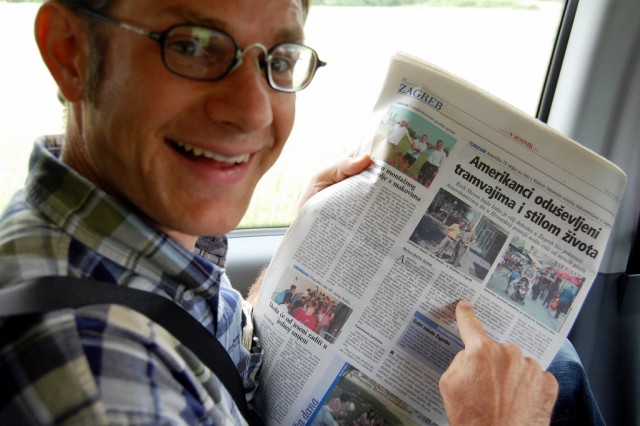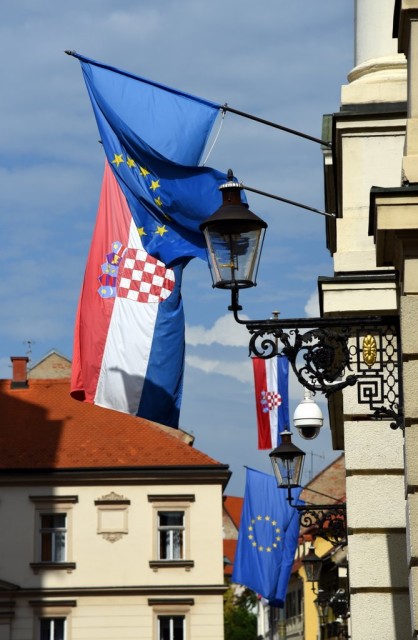I love Zagreb. Most people couldn’t imagine loving Croatia’s landlocked capital…or even going there. But trust me: It’s a great city.
On my first trip to Zagreb, I wasn’t sure what to expect…but it certainly wasn’t much. Let’s face it: Even just the name of the city sounds like a wet Slavic belch. But when I first got to know Zagreb, my low expectations were wildly exceeded. “Hey,” I thought. “This is a really cool place!”
Then I brought Rick Steves here. It took some convincing. But as he strolled through the town, gradually succumbing to its charms, he said to me, “Hey, this is a really cool place!”
A couple of years later, Rick and I came back with a film crew to shoot a travel show on Zagreb. Simon, our producer, and Karel, our cameraman, warmed up to the city immediately. They both turned to me and said, “Hey, this is a really cool place!”
Then, just a couple of years ago, I brought my wife here. And you’ll never guess what she said to me…
You get the idea. Zagreb is a delight. One out of every six Croatians lives in this hive of commerce, which is closer to Slovenia and Hungary than it is to any beach. As a onetime leading city of the Habsburg Empire, it has a “little Vienna” vibe to it — with Old World elegance, classy Baroque flourishes, and a certain tidiness. Some of its historic streets, like the tongue-twisting café drag Tkalčićeva, have an almost Prague-like charm.

From a traveler’s perspective, Zagreb also benefits from a contrast effect. Most people visiting Croatia focus on the coast — which, don’t get me wrong, is glorious. But after several days of island-hopping, choosing from the same seafood-and-pizza menu every day, and stubbing your toes on underwater rocks and sea urchins, urbane Zagreb is just the place to recover from your sunburn. In this country so focused on its coastal destinations, Zagreb is a continental palate-cleanser.
Zagreb has always had nice bones. But it’s been a thrill to observe the city fleshing out those bones over the last several years. Today’s Zagreb is flourishing, with an exciting new bustle and vitality: Great restaurants, from artisanal bakeries to foodie splurges. Slick design stores and fashion boutiques that meld Croatian tradition with contemporary style. More great museums than the rest of Croatia combined. And non-stop festivals that enliven the summer.

Zagreb is a city of magnificent parks. The old town is ringed by forested hills and ravines. And zigzagging through the urban core is a “Green Horseshoe” of thoughtfully manicured parklands, punctuated by genteel historic buildings. During my visit on a sunny September weekend, these parks, and the city’s squares, were packed with revelers…three separate outdoor festivals were going on at the same time.

Jelačić Square — Zagreb’s main urban crossroads — is big, angular, and a little imposing. Giant billboards advertise Croatian brands you’ve never heard of, and trams zip through constantly.

But even here, the hard edges are softened by local life. On weekends, one corner of Jelačić Square is filled with the stalls of a colorful flower market.

Being back on Jelačić Square, I remember when I was here with Rick in 2009, filming our TV show about Croatia. The tourist board asked us to take an interview with a local newspaper. Trying to convey his excitement about the general bustle and commercial metabolism of the city, Rick mentioned how he enjoyed seeing the trams come and go, with commuters piling on and off. When the paper came out, we bought a copy and got a kick out of seeing — but not reading — the article, which was in Croatian. Later, I showed it to a Croatian friend and asked for a summary. Skimming it, he said, “Hmmm…they say that Rick is really, really excited about the public transportation.”

Croatia officially joined the European Union in 2013, and today, civic buildings fly both the red, white, and blue Croatian flag and the yellow stars on a blue field of the EU. Like any country that joins the EU, Croatians expressed a lot of angst leading up to membership. But it seems like most Croatians are already satisfied that, overall, it was the right choice. On the other hand, Croatia — and Zagreb in particular — is facing a trial by fire, as it’s become a highway for refugees from Syria (and other places) making the long journey to a better life in Austria or Germany. I actually met some of those refugees in the Zagreb train station, and later saw their abandoned tents at the border — a very powerful reminder of the human face behind the “refugee crisis.”
I’ll be sharing more photos and insights about Zagreb over the next few days. Stay tuned!
Another series of great posts…and about places I would like to go someday. How versed are the Croatians with the English language? What is the language situation in Zagreb?
Hey Jim. Just about everybody in Croatia under the age of 40 or so speaks English. And most people over 40 do, too. Kids start learning it in school in the second grade. And they watch American TV shows with subtitles, so they hear it all day long. I’d say Croatia has one of the smallest language barriers in Europe…especially in a big city like Zagreb.